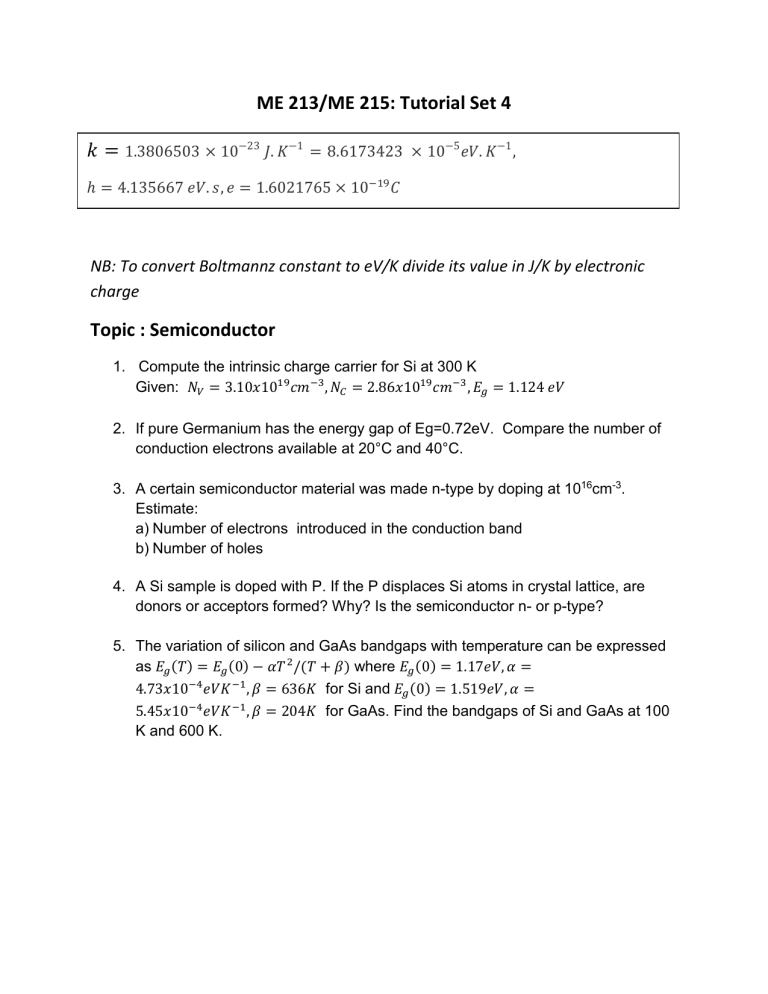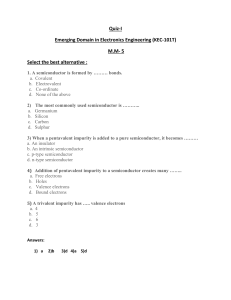
ME 213/ME 215: Tutorial Set 4 𝑘 = 1.3806503 × 10−23 𝐽. 𝐾−1 = 8.6173423 × 10−5 𝑒𝑉. 𝐾−1 , ℎ = 4.135667 𝑒𝑉. 𝑠, 𝑒 = 1.6021765 × 10−19 𝐶 NB: To convert Boltmannz constant to eV/K divide its value in J/K by electronic charge Topic : Semiconductor 1. Compute the intrinsic charge carrier for Si at 300 K Given: 𝑁𝑉 = 3.10𝑥1019 𝑐𝑚−3 , 𝑁𝐶 = 2.86𝑥1019 𝑐𝑚−3 , 𝐸𝑔 = 1.124 𝑒𝑉 2. If pure Germanium has the energy gap of Eg=0.72eV. Compare the number of conduction electrons available at 20°C and 40°C. 3. A certain semiconductor material was made n-type by doping at 1016cm-3. Estimate: a) Number of electrons introduced in the conduction band b) Number of holes 4. A Si sample is doped with P. If the P displaces Si atoms in crystal lattice, are donors or acceptors formed? Why? Is the semiconductor n- or p-type? 5. The variation of silicon and GaAs bandgaps with temperature can be expressed as 𝐸𝑔 (𝑇) = 𝐸𝑔 (0) − 𝛼𝑇 2 /(𝑇 + 𝛽) where 𝐸𝑔 (0) = 1.17𝑒𝑉, 𝛼 = 4.73𝑥10−4 𝑒𝑉𝐾 −1 , 𝛽 = 636𝐾 for Si and 𝐸𝑔 (0) = 1.519𝑒𝑉, 𝛼 = 5.45𝑥10−4 𝑒𝑉𝐾 −1 , 𝛽 = 204𝐾 for GaAs. Find the bandgaps of Si and GaAs at 100 K and 600 K.




